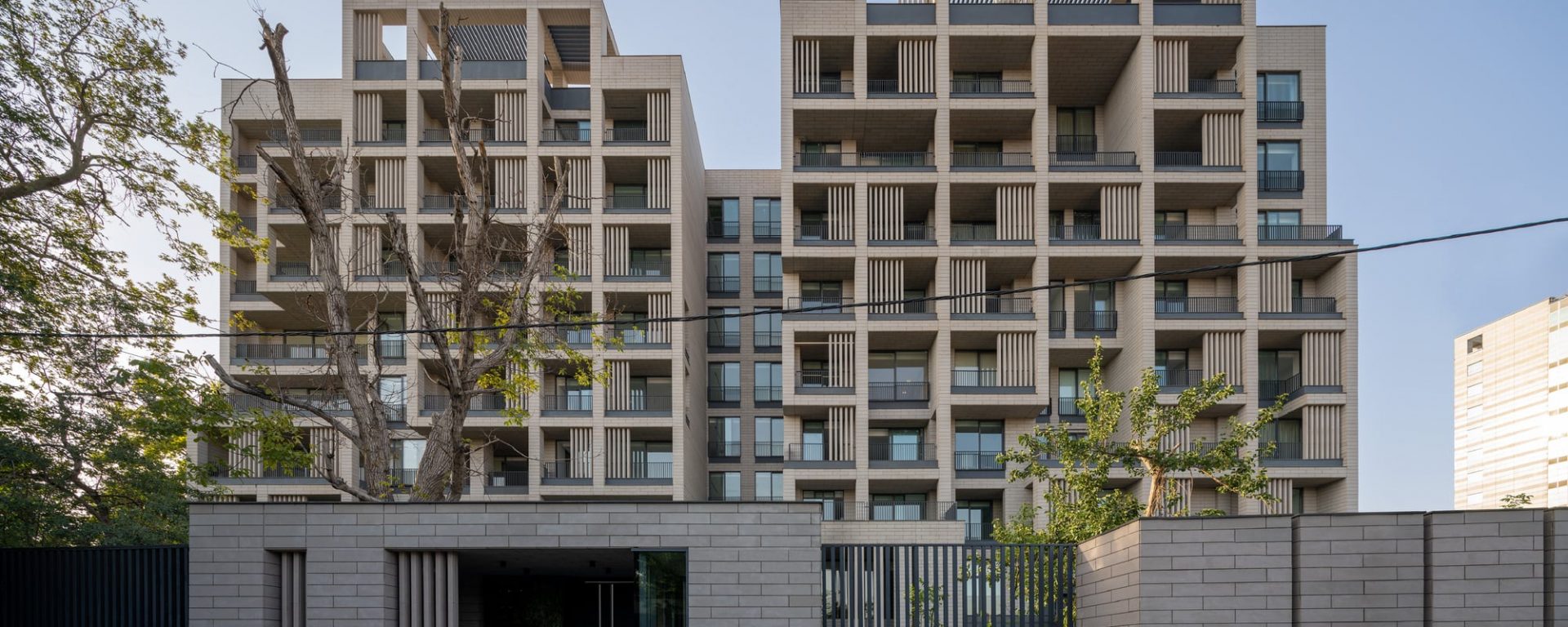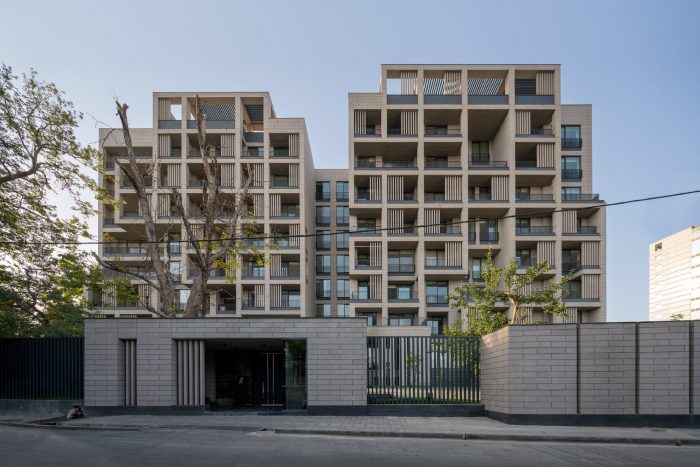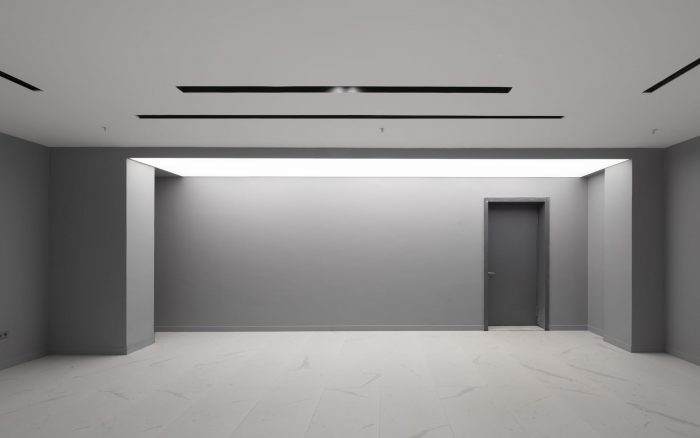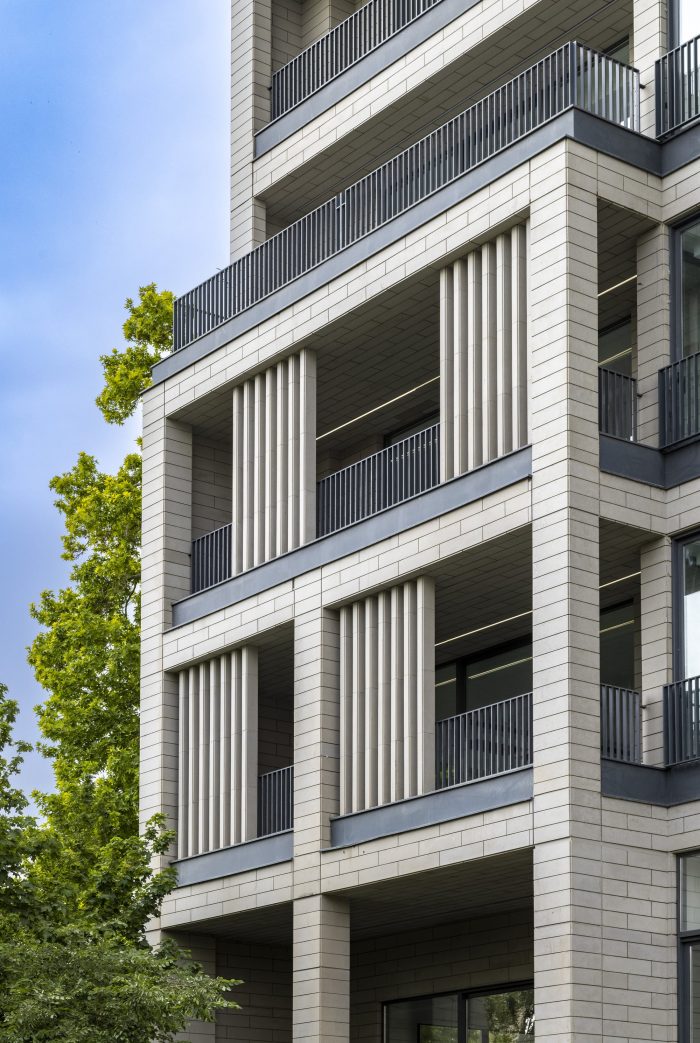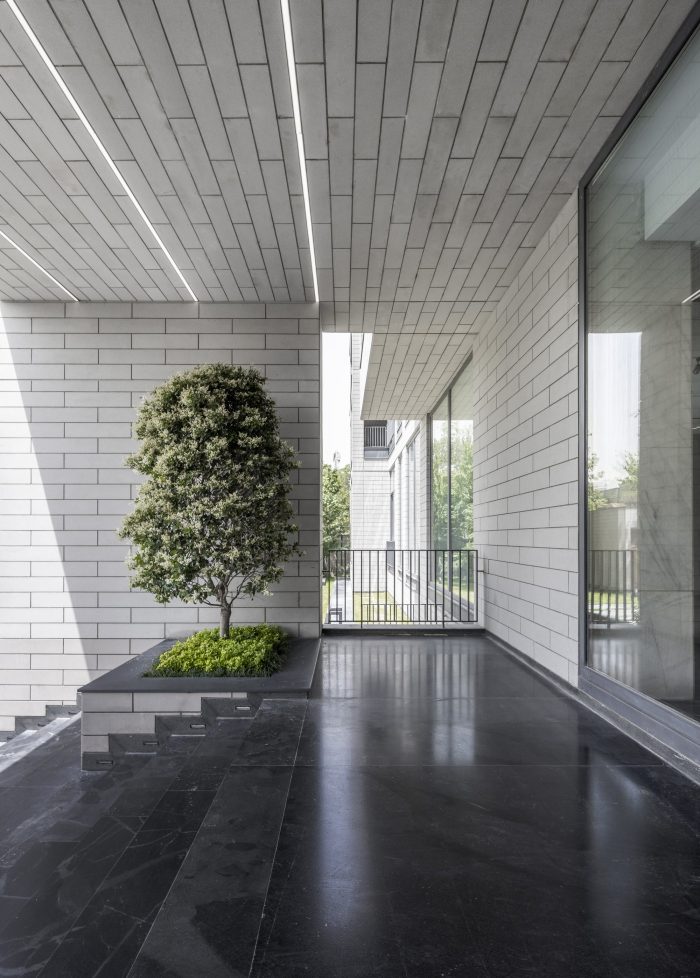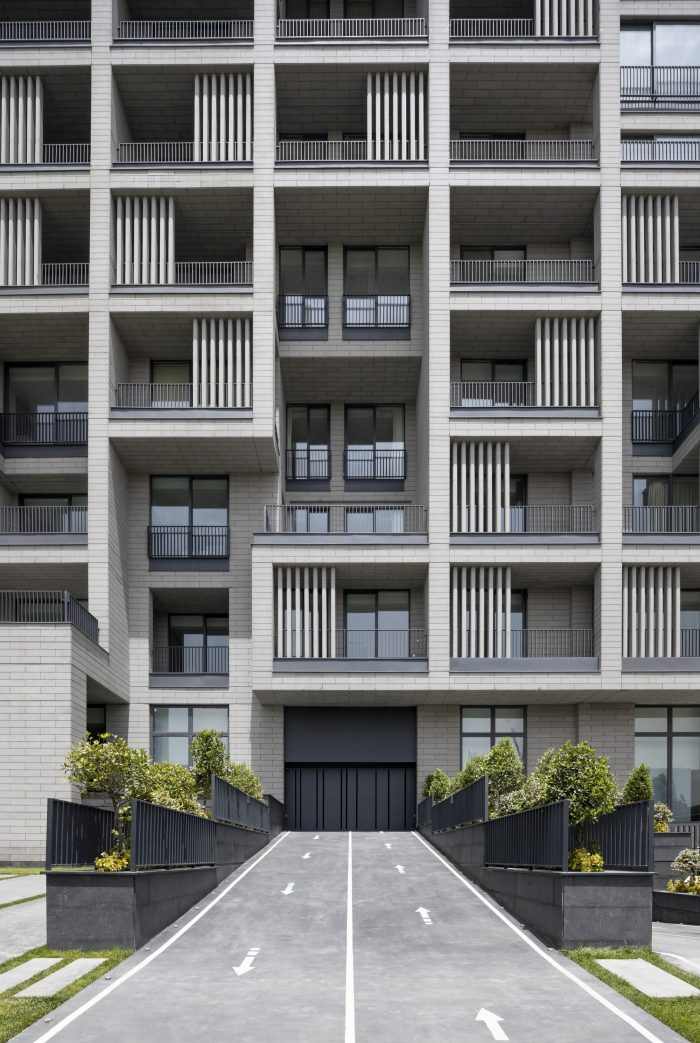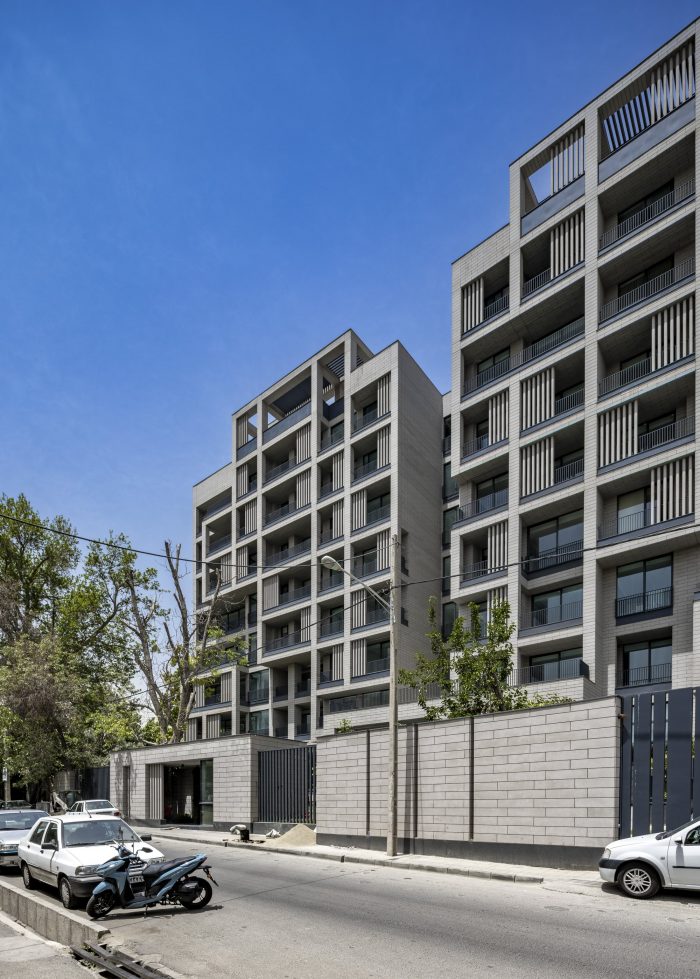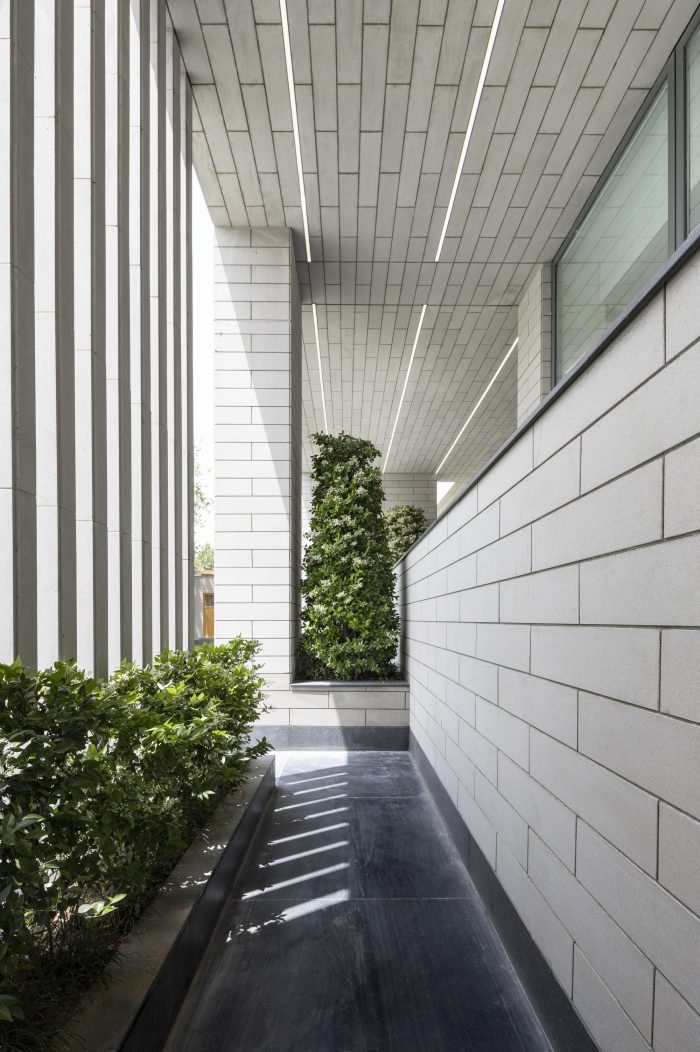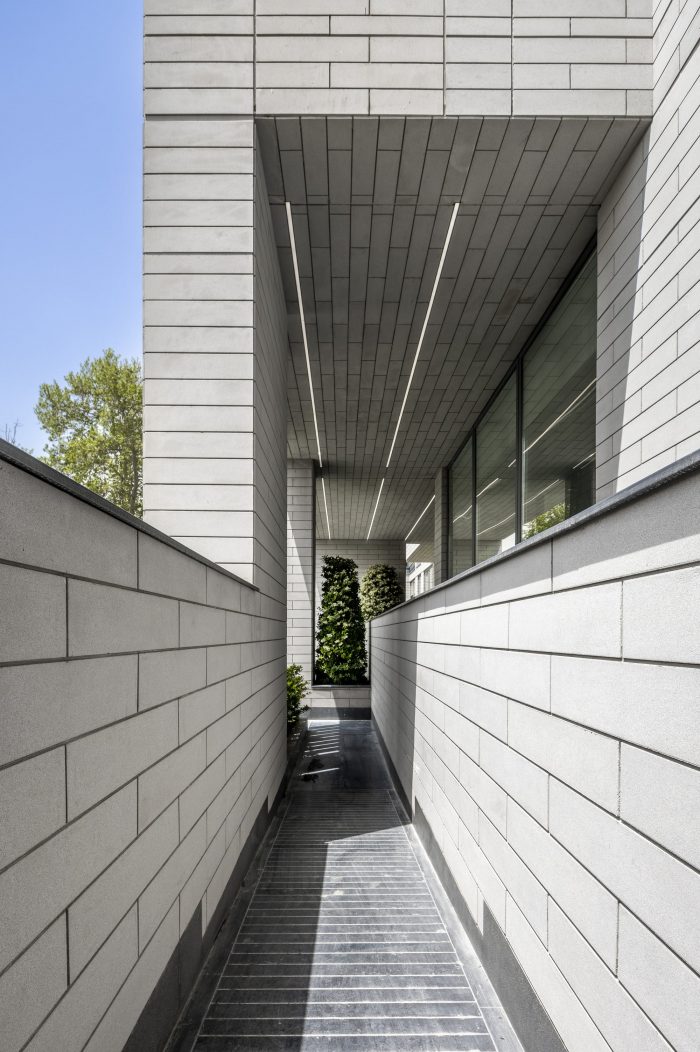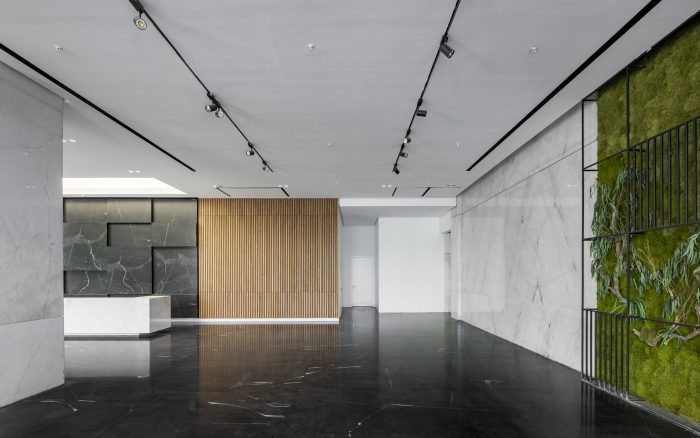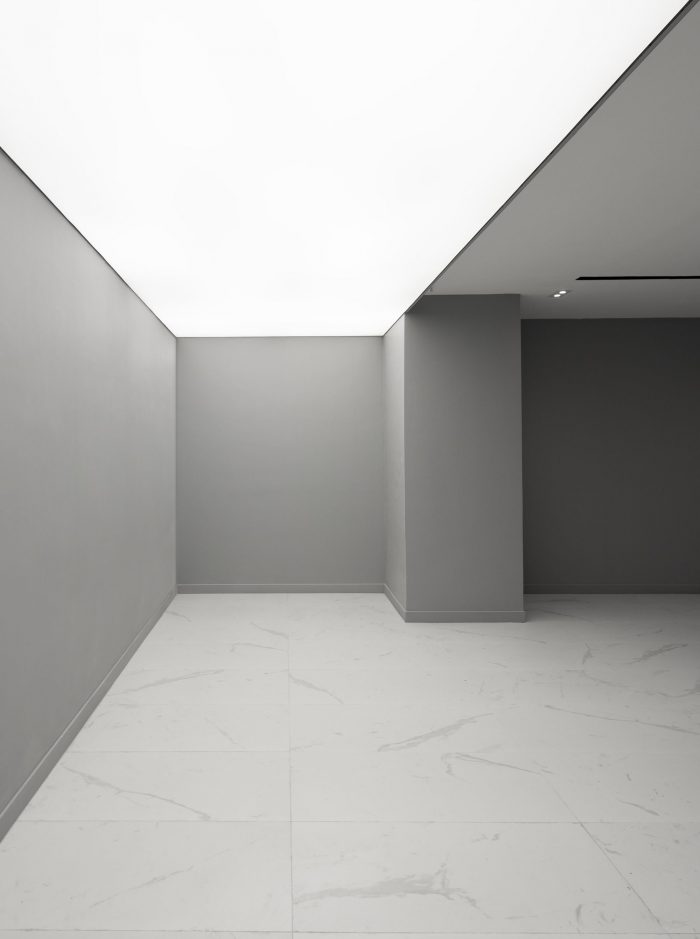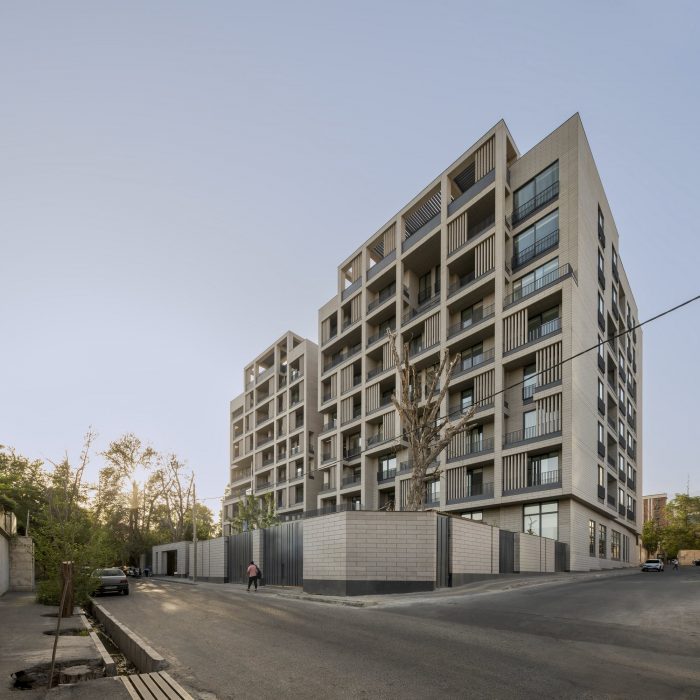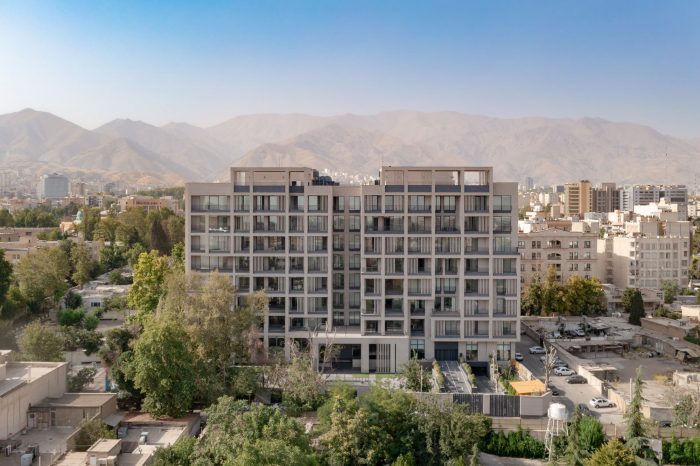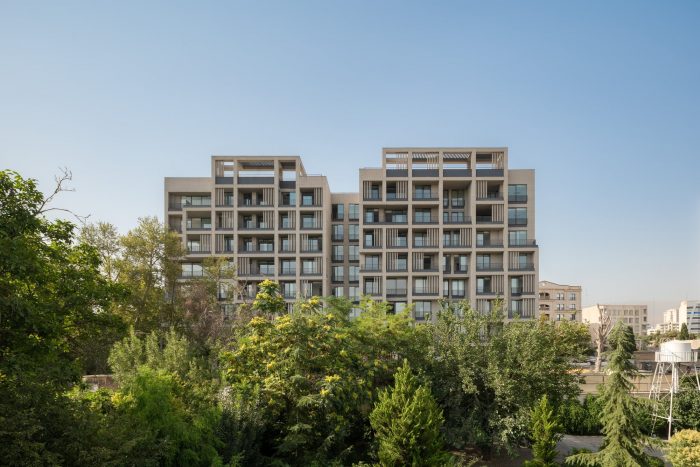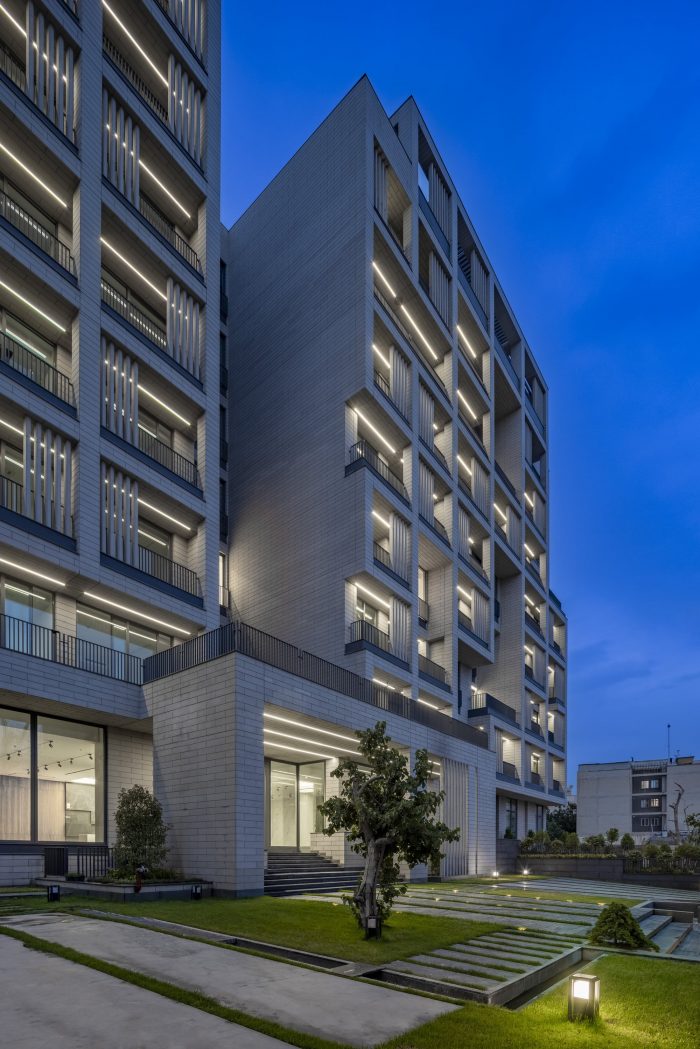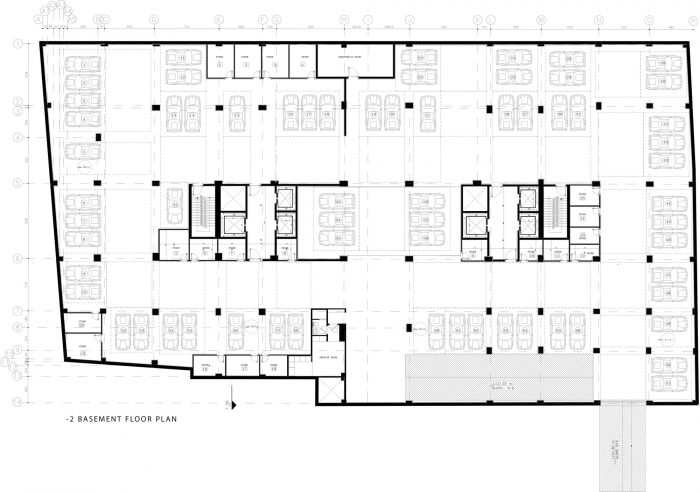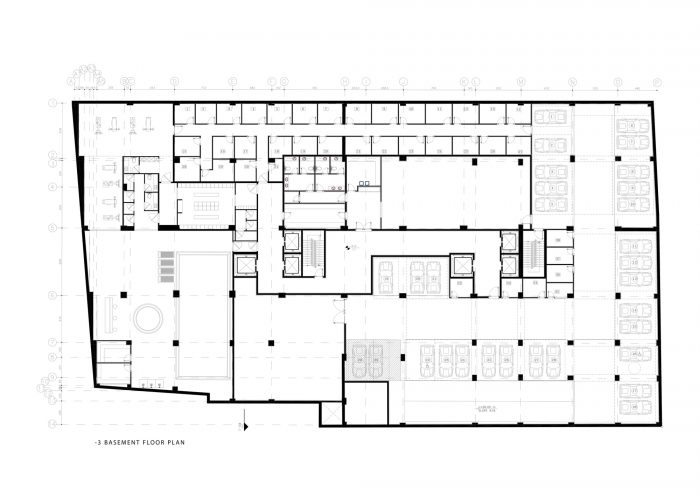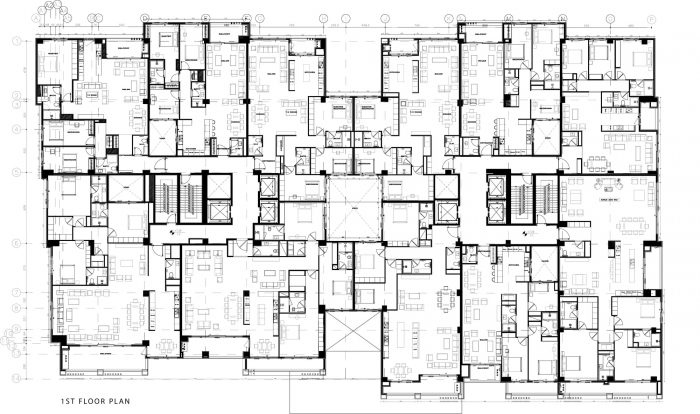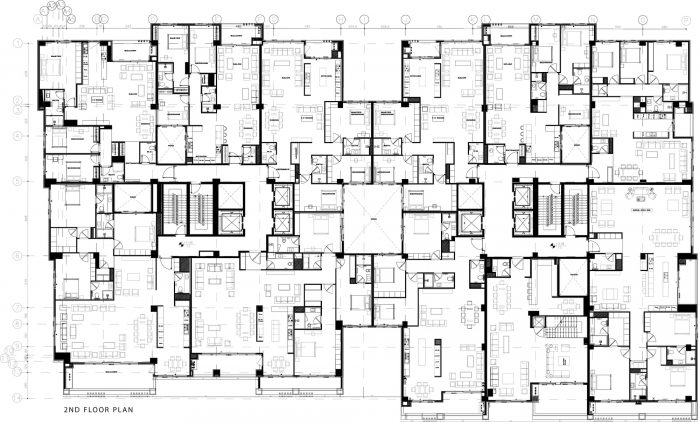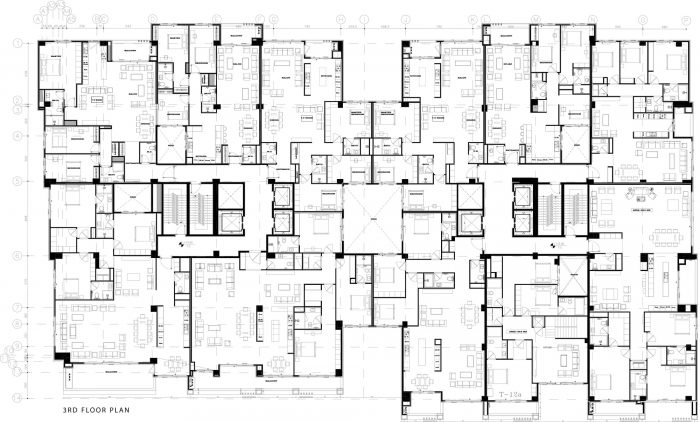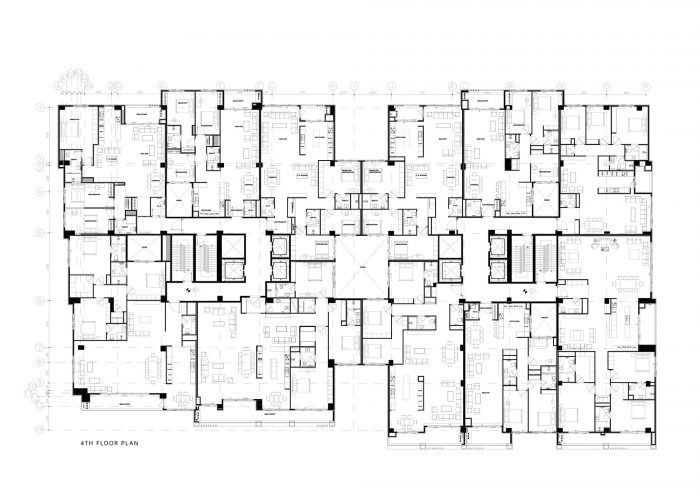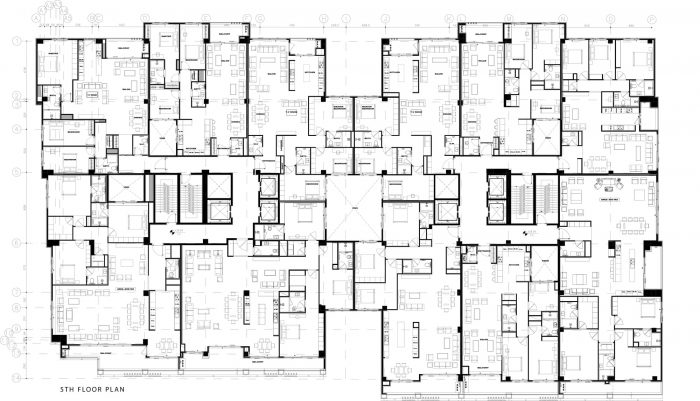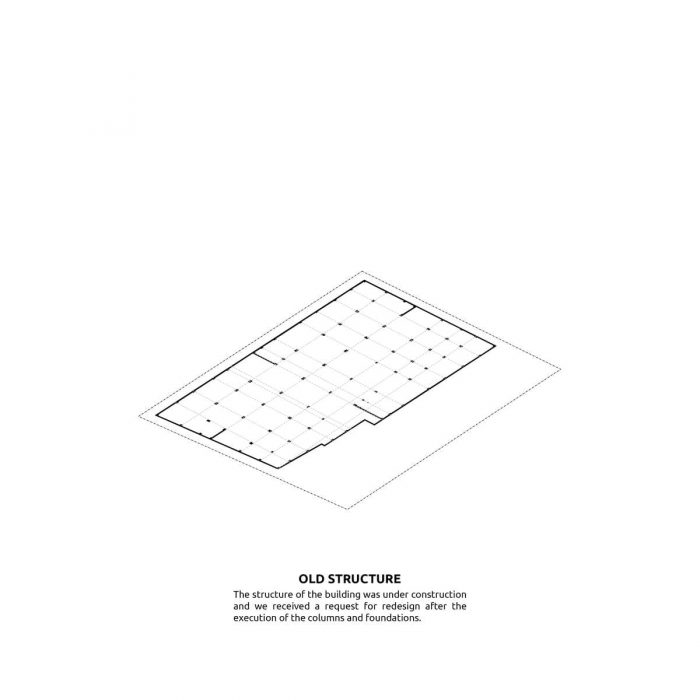Sheikh Bahaei住宅楼项目位于德黑兰的Vanak。该地区主要是住宅用地,被认为是德黑兰大都市中最有价值的地区之一。这座建筑的地块面积近4800平方米,总面积近30000平方米,包括底层的大厅、停车场和住宅单元,地下三层的停车场和福利公共空间,以及七层住宅。该项目共包括77个住宅单元,空间面积为165-360平方米。需要指出的是,该项目在挖掘阶段已经完成,地基阶段已经完成的情况下,交由顾问团队进行设计和执行。
Sheikh Bahaei residential building project is located in Vanak, Tehran. This region, with mainly residential land use, is assumed among the quire valuable zone in Tehran metropolis. This building is constructed with a plot area of nearly 4800m2 and a gross area of nearly 30000m2 including a ground floor with a lobby, parking lot, and residential units at the same time, three basement floors with parking lot and welfare common spaces, and seven residential floors. This project includes a total of 77 residential units with a space area of 165-360m2. It should be noted that the project was referred to the counselor team for design and execution while the excavation phase had been finished and the foundation phase had been completed.
与项目设计有关的主要问题是基于两个主要问题。首先,尽管每层的公寓数量众多,但如何减少相邻的公寓数量,以避免干扰居民的舒适度?第二,在一个拥有众多单元的综合体中,如何将住宅单元的密度体现在主楼的外墙上,作为一个身份和功能的因素,以便在建筑的内部和外部之间建立完整性?关于第一个问题,考虑到相对广泛的地块宽度(近75米),假设有两个完全独立的区域(从底层开始),导致住宅楼层的规划被划分为两个有5或6个相邻单元的街区。这使得单元的私密性更好,公共空间不那么拥挤,从而使居民更加舒适。
The main problem in relation to the project design was based on two major issues. First, how can the number of apartments that are adjacent to each other be reduced despite the numerousness of the apartments on each floor in order to avoid disturbing the residents’ comfort? Second, how can the density of the residential units in a complex with numerous units be represented in the main building facade as a factor of identity and function in order to establish integrity between the internal and external parts of the building? Apropos of the first issue, considering the relatively extensive plot width (almost 75m), two completely separate zones (from the ground floor upward) were assumed leading to the division of the plan of the residential floors into two blocks with 5 or 6 adjacent units. This resulted in better privacy of the units and less-populated and less-crowded common spaces and, consequently, more comfort for the residents.
同时,为了体现项目南侧的密度概念,建筑外墙表皮,包括半开放空间,被添加到建筑中,在城市开放空间和住宅单元的封闭空间之间起到了屏障作用。将这个外墙表皮划分为小规模的像素,不仅代表了后侧住宅单元的数量,而且通过创造小规模的空间,改善了建筑与周围城市环境的语义和视觉关系。小尺度的空间也增加了在体量中增加绿色植物的可能性,此外,也提高了居民的生活质量。此外,通过改变像素的形式和规模,它试图与住宅单位的不同类型提供更好的协调。例如,为复式单位创造了具有较高屋顶的院子,也为较大的单位提供了较宽的阳台。因此,通过使外墙表皮更加灵活,这个附加的元素实际上被溶解在其后侧的体积中,成为其不可分割的一部分。此外,对现有的结构进行一些改变,在两个街区之间形成了一个具有相当宽度和深度的凹槽,其结果是使两个街区之间的区别更加明显。
In a parallel way and in order to represent the concept of density on the southern side of the project, the building facade skin, including the semi-open spaces, was added to the building, which played the role of a barrier between the urban open space and the closed space of the residential units. Dividing this facade skin into small-scale pixels not only represents the numerousness of the rear-side residential units but also improves the semantic and visual relationship of the building with its surrounding urban environment by creating spaces with a small scale in volume. The small-scale spaces also increase the possibility of the addition of greenery in the volume and, besides, improve the quality of life of the residents. Moreover, by changing the form and scale of the pixels, it is attempted to provide better coordination with the diverse typologies of the residential units. For instance, yards with higher roofs were created for duplex units and also wider balconies were provided for bigger units. As such, by making the facade skin more flexible, this appended element was, in practice, dissolved in its rear-side volume and became an inseparable part of it. Furthermore, applying some changes to the existing structure resulted in a groove with considerable width and depth between the two blocks, the consequence of which was a clearer distinction of the blocks from each other.
对现有结构设计的干预是增加了建筑的入口空间,这确实将住宅项目中常用的入口门转化为建筑内部和外部空间的中间空间。在这个入口空间中形成的运动循环与残疾人坡道(轮椅坡道)一起为观众提供了进入建筑的不同体验,并使其成为建筑中具有独立身份的重要子集。
An intervention to the design of the existing structure was the addition of the entrance space to the building, which indeed converts the entrance gate commonly used in residential projects into an intermediary space between the inner and outer spaces of the building. The formation of movement circulation in this entrance space along with the disabled ramp (wheelchair ramp) provides a different experience of entering a building for the audience and makes it an important subset of the building with an independent identity.
至于建筑立面材料的选择,考虑到主立面的形式导向和阳台的中间空间的存在,阳台主要被设计成南部立面的遮阳板,决定使用一种主导材料(尺寸为20*90cm的工业砖),避免颜色的多样性和视觉干扰作为主要方法。毋庸置疑,砖是非常重要的,既因为它在伊朗建筑中的杰出历史和背景,也因为它与现代建筑的协调和一致。另外,在本项目中,玻璃和带有烟熏色的金属板等互补和中性材料也被用于建筑立面的构成。此外,对于附加的南部表皮的细节设计,嵌入的百叶窗一方面负责控制气候,减少南部和西南部的阳光辐射,另一方面,在半开放空间(阳台)的某些部分提供隐私,从而满足居民的一些福利相关需求。在建筑的校园里,在现有的坎儿井上建造了一个喷水池(作为伊朗文明和建筑文化的永恒纪念品之一)。因此,我们向用户展示了坎儿井水从校园空间流向建筑外的过程。
As for selecting the material for the building facade and considering the form-oriented approach of the main facade and the presence of the intermediary space in the balconies, which have been designed mainly as shader on the southern facade, it was decided to use a dominant material (industrial bricks with dimensions of 20*90cm) and avoid color diversity and visual disturbance as the main approach. Needless to say, brick is highly important both due to its outstanding history and background in Iranian architecture and due to its coordination and consistency with modern architecture. Also, complementary and neutral materials such as glass and metal sheets with smoky colors have been used in the composition of the building facade in this project. Moreover, as for the design of the details of the appended southern skin, the embedded louvers, on the one hand, are responsible for controlling the climate and reducing the southern and southwestern sunlight radiation and, on the other hand, provide privacy in some parts of the semi-open spaces (balconies) and, thereby, meet some of the welfare-related needs of the residents. On the campus of the building, a water fountain was built on an existing qanat (as one of the ever-lasting mementos of the Iranian civilization and architectural culture). As such, the passage of qanat water from the campus space towards outside the building was demonstrated to the users.
最后,应该指出的是,Sheikh Bahaei项目的设计师团队试图为该项目众多的住宅单元提供舒适性,通过在建筑外墙使用多孔皮肤和创造一个与城市景观相称的小规模来提高透光墙的质量,同时也为居民的生活空间使用绿色植物提供基础。
In the end, it should be noted that the designer team of the sheikh Bahaei project attempted to provide comfort for numerous residential units of the project, improve the quality of the light-passing walls by using porous skin in the building facade and creating a small-scale proportionate to the urban landscape, and also provide the ground for using greenery in the living space of the residents.
Architects: Alidoost and Partners
Area : 30000 m²
Year : 2022
Photographs :Deed Studio, Parham Taghiof
Manufacturers : AutoDesk, Rak ceramics, Adobe, Azarakhsh Brick, Knauf, N.D.A Co. , Nooraneh, Pouyesh Tahvieh
Lead Architects : Shahab Alidoost, Sona Eftekharazam
Mechanical And Electrical : Esco Jam Co., Pouya Harandi, Amir Hedayat
Design Team : Amir Niknafs , Hamideh Raoufzadeh , Sahand Mohades, Hamed Bakhtiari, Mehrdad Karchani, Parisa Pouyafard, Sama Khaki, Mina Mehrdad, Ida Ehsani, Venus Entezami, Kourosh Amirshahi, Mojgan Abdollahi, Ali Izadi, Niloufar Mohammadzadeh, Ehsan Danandeh
Construction Manager : Arash Sheibani
Structural : Samad Aghazadeh
Client : Mr. Amiri
Execution : Alidoost and Partners
City : Tehran
Country : Iran

